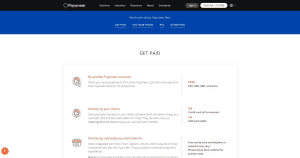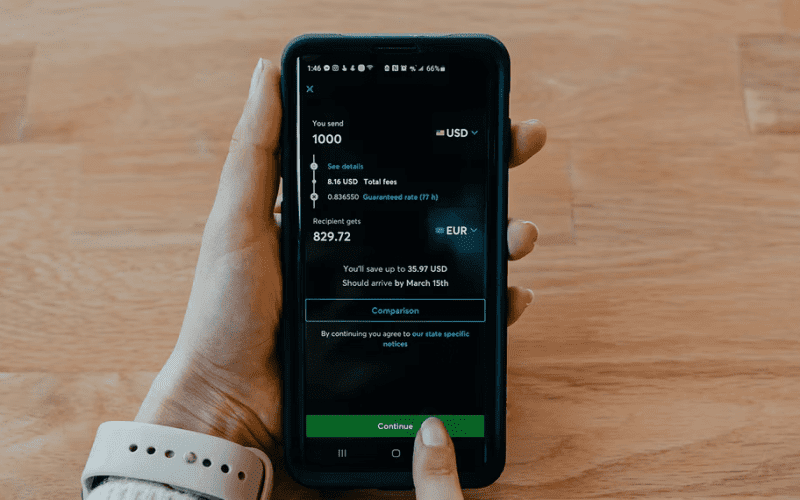Introduction: PayPal vs. Payoneer
In an era where digital financial transactions are the norm, the choice of a secure and efficient payment platform becomes paramount. Two major players in this field, PayPal and Payoneer, vie for the attention of users worldwide. In this article, we’ll conduct a thorough examination of their security features, usability, accepted payment methods, fee structures, transaction limits, and withdrawal times to help you make an informed decision on which platform best suits your financial needs.
Security Measures:

- PayPal: PayPal employs robust security measures, including one-time passwords, fraud monitoring, data encryption, and transport layer security. Users can also access the PayPal security key via text message.
- Payoneer: Payoneer offers two-step verification, RSA authentication, and account takeover prevention. Their security center provides detailed insights into user-side protection.
Credibility:
- PayPal: PayPal showcases its security certifications, demonstrating its commitment to safeguarding user data.
- Payoneer: Payoneer displays licenses and security certifications from regulatory bodies, instilling confidence in its security standards.
Integration and Usage:
- PayPal: PayPal’s extensive integration with various platforms, coupled with its versatile services like bill payments, business loans, and crypto transactions, makes it a comprehensive choice.

Image by https://www.makeuseof.com/ - Payoneer: Payoneer excels in platform integration, especially with freelancing sites. It also supports online shopping and multiple currencies.

Image by https://www.makeuseof.com/
Accepted Payment Methods:

- PayPal: PayPal allows credit/debit card linking and facilitates crypto transactions, offering convenience.
- Payoneer: While Payoneer doesn’t support bank-to-account transfers, its strength lies in multiple currency support, making it ideal for international transactions.
Fee Structure:

- PayPal: PayPal’s fee structure can be complex, varying by region and transaction type. It includes merchant fees and crypto transaction fees.
- Payoneer: Payoneer offers straightforward, easy-to-track fees that may vary depending on the marketplace and card ownership.
Transaction Limits:
- PayPal: PayPal offers flexible transaction limits based on account verification, accommodating various user needs.
- Payoneer: Payoneer imposes daily and monthly transaction limits, which may influence your choice based on your transaction volume.
Withdrawal Times:

- PayPal: PayPal provides instant and standard withdrawal options, ensuring quick access to funds.
- Payoneer: Payoneer’s standard withdrawal takes up to two business days, which could affect your decision if you require speedy access to your money.
Table: PayPal vs. Payoneer Security and Features
| Aspect | PayPal | Payoneer |
|---|---|---|
| Security Measures | – One-time passwords – Fraud monitoring – Data encryption – Transport layer security | – Two-step verification – RSA authentication – Account takeover prevention |
| Credibility | – Lists of security certifications | – Licenses and security certifications |
| Integration and Usage | – Integration with thousands of platforms – Bill payments – Business loans – Crypto transactions | – Integration with platforms like Fiverr, Upwork, iStock – Multiple currency support – Online shopping |
| Accepted Payment Methods | – Credit/debit card linking – Crypto transactions | – Multiple currency support – No bank-to-account transfers |
| Fee Structure | – Complex, region-based fees – Merchant fees – Crypto transaction fees | – Straightforward, easy-to-track fees – Varies by marketplace and card ownership |
| Transaction Limits | – Varied limits based on account verification | – Daily and monthly limits for transactions |
| Withdrawal Times | – Instant and standard withdrawal options | – Standard withdrawal takes up to two business days |
Conclusion
In the PayPal vs. Payoneer battle, the victor depends on your specific financial needs. PayPal, with its well-rounded services, is an ideal choice for personal use and general business transactions. On the other hand, Payoneer excels in facilitating payments from clients and businesses, particularly in the freelance industry. Consider your intended usage, transaction volume, and need for flexibility or set limits when making your decision.












